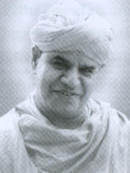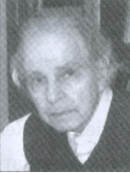National Institute of Prakrit Studies and Research
Śrutakevali Education Trust (R)
Śravaṇabeļagola, 573 135, India

Bestowal Function of the Prakrit Jñānabhārati International Award of 2005 and 2006 at Berlin (Germany)
Introductory Speech
by
Prof. Dr. Nagarajaiah Hampana
Convener
Since I come from the region of the celebrated Kundakunda Ācārya, Samantabhadradeva and Ākalaṅkācārya, let me remember a verse each of them at the very beginning:
Tiļoyasabbajīvāṇaṁ hiyaṁ dhammovadesinam
Vaḍḍamāṇam Mahāvīraṁ vandittā sabbaveyiṇam ||
Namahśrī Vardhamānāya nirdhūta kalilātmane
Sālokānāmtrilokānāmyadvidyādarpaṇāyate ||
Srimatparama gaṁbhira Sydvdāmogha Iāñcanam
Jīyāt trailokya-nāthasya śāsanam Jinaśāsanam ||
Though all the 24 Tīrthankaras were born in the north, interestingly very many great ācāryas who propagated Jina-vāṇi hailed from south and that too from Karṇāṭaka. An inscription of late medieval period states that Karṇāṭaka a was an abode of Jainism. Rightly so this fertile land of Karṇāṭaka first became the choice of śrutakevali Bhadrabāhu who left north India an account of terrible famine that sustained for 12 long years. Along with his royal disciple Candragupta Maurya and a cortège of thousands of monks, he finally settled on the summit of Candragiri at Śravaṇabeļagola.
 From then on the deep rooted indigenous Jainism made rapid strides in all walks of life and found its efflorescence in the subsequent centuries. A plethora of Jain monuments containing lithic records of religious and historical importance establish that Jains were the early apostles of culture and learning. About 200 inscriptions from Āndhrapradesh, 600 from Tamilnāḍu and more than 3000 from Karṇāṭaka show Jaina imprints. Astonishingly, 85 out of 89 earliest inscriptions from 3rd century BCE to 4th century CE of Tamilnāḍu, i.e., about 90%, are of Jaina affiliation. Similarly, the early cultivators of Kannaḍa and Tamil languages and literature were Jaina men of letters. About 450 Jaina poets have written 525 works in Kannada language, from the sixth to the end of 18th century. Through the induction of Prakrit and Sanskrit vocabulary and literary forms, Kannaḍa developed the required precision and flow to become a powerful media of expression in all branches of knowledge.
From then on the deep rooted indigenous Jainism made rapid strides in all walks of life and found its efflorescence in the subsequent centuries. A plethora of Jain monuments containing lithic records of religious and historical importance establish that Jains were the early apostles of culture and learning. About 200 inscriptions from Āndhrapradesh, 600 from Tamilnāḍu and more than 3000 from Karṇāṭaka show Jaina imprints. Astonishingly, 85 out of 89 earliest inscriptions from 3rd century BCE to 4th century CE of Tamilnāḍu, i.e., about 90%, are of Jaina affiliation. Similarly, the early cultivators of Kannaḍa and Tamil languages and literature were Jaina men of letters. About 450 Jaina poets have written 525 works in Kannada language, from the sixth to the end of 18th century. Through the induction of Prakrit and Sanskrit vocabulary and literary forms, Kannaḍa developed the required precision and flow to become a powerful media of expression in all branches of knowledge.
A galaxy of ācāryas, including the celebrated Kundakunda Ācārya, Samantabhadradeva, Pūjyapāda and Akalaṅka, and the illustrious Prakrit poets like Svayambhu, Pushpadanta, and Nemicandra Siddhanta Cakravarti, and notable Kannaḍa poets like Pampa, Ponna and Ranna who were the Ratnatrayas and Jinasamaya-dīpakas - spread the culture of non-violence. All the floodgates of royal benevolence were thrown open to pave avenue for Jaina order. Commencing from the pre and early medieval ruling houses, many major and minor dynasties of Karṇāṭaka were pro-Jaina and showered lavish support for an extended period of over a thousand years.
Unprecedented and unlimited patronage was initiated from the beginning of current era and Jainism became the state religion during the reign of Ādikadambas, the Gaṅgas, the Bādāmi Calukyās and the Rāṣṭrakūṭas. The Kadambas of Banavasi drew inspiration from Jinadharma and their deep-rooted conviction has crystallized in the following inscription of the fifth century CE,
Yasmin Jinendra-pūjā pravartate tatra tatra deśa parivṛddhiḥ
Nagarāṇāṁ nirbhayatā tad=deśa svāminān-ch=orjjā ||
Namo namḥ ||
[Corpus of Kadamba Inscriptions No. 24., 5th Century CE. Halasi (Belgaum Dt. Khānāpur Tk.), p.25]
Where so ever the worship of Jinendra is kept up, there is prosperity of the country and the cities are free from fear and the lords of those countries acquire strength. Reverence, reverence!
Prominent preceptor Simhanandi Ācārya (circa. 4th century), southern replica of Kālakācārya alias Āryashyāma (1st century BCE and CE), promoted the Gaṅga kingdom that sustained for eight hundred years. Rightly swept up in the spirit of age and history, Simhanandi laid down the rules of kingship for his protégé:
If you fail in what you have promised
If you do not approve of the Jaina teachings
If you seize the wife of another
If you eat honey or flesh
If you form relationship with low people
If you do not give your wealth to the needy
If you flee from the battle field
Then your race will go to ruin.
All the Gaṅgas faithfully adhered to these aeonial commandments almost verbatim. They fought bravely and won many decisive battles, whole-heartedly approved the Jaina teachings, maintained sterling character, remained virtuous, followed vegetarianism, aimed at altruistic principles, and distributed their wealth to the needy. A number of Gaṅga charters go to approve that they were celebrated for their unswerving fidelity to the plighted word. They continued to include the cognomen Dharma-Mahādhirāja and satya-vākya, (the king of righteousness and of integrity) in their praśasti to aver their guru Simhanandi.
The Gaṅgas had declared their devotion to Nirgrantha church and took the role of saviour. Consequently that was the period of ascendency and Jainism became a dominant creed in the state. The Gaṅgas have built celebrated Jaina temples. The Gaṅga kings were known for their learning and scholarship in Jaina philosophy. The popularity of Jainism reached its apogee in the south and the population of Jains swelled to the brim during the period of the Gaṅgas and the Rāṣṭrakūṭas; 1/3 of the total population during the reign of Rāṣṭrakūṭas was Jains.
The Gaṅgas and Rāṣṭrakūṭas s encouraged Prakrit, Sanskrit and Kannada language together with art and architecture. Curiously, throughout the history, Śravaṇabeļagola was the nerve centre and nucleus. It is from here that the ripples of Jaina faith spread far and wide in the Deccan.
Cāmuṇḍarāya, minister and general of the Gaṅga kings, a great warrior of several successive battles, being versatile in Prakrit, Sanskrit and Kannaḍa languages, at the instance of his preceptor Ajitasena translated the Mahāpurāṇa, magnum opus of Jinasena and Guṇabhadra Ācāryas, from Sanskrit into Kannaḍa prose (978 CE). Nemicandra Ācārya abridged and recasted the entire Jaina canon and composed the Gommaṭasāra in Prakrit for the benefit of his pupil Cāmuṇḍarāya. On the suggestion of Nemicandra, Cāmuṇḍarāya commissioned and consecrated the 58.8 foot monolithic colossus of Bāhūbali on the crest of Vindhagiri.
From then on Śravaṇabeļagola became a permanent centre of Prakrit, Sanskrit and Kannaḍa literature, art and architecture. Once again the holy place witnessed renaissance and reformation under the able guidance of saint-scholar His Holiness Svasti Srī Cārukīrti Bhaṭṭāraka Paṭṭācārya. Paramapūjya Srī Cārukīrti Bhaṭṭarak-ji is an unique blend of ancient and modern, tradition and radical outlook.
The National Institute of Prakrit Studies and Research Śravaṇabeļagola (Karnataka, India) was established in 1993 under the aegis of Śhrūtakevali Education Trust (R), to propagate and promote Prakrit studies and Research. At the instance of His Holiness Srī Cārukīrti Bhaṭṭārkaswāmi-ji, Kannaḍa translation of the Dhavaļā, Jayadhavaļā and Mahadhavaļā, the three celebrated commentaries on the Prakrit Shaṭkhaṇḍa Āgama, the primordial Jaina canon, has been published. The Institute has also published bilingual texts in Kannada and Prakrit to facilitate the teaching and learning of Prakrit language. Periodical examinations are conducted and certificates are given to successful candidates at an annual convocation. State and National level seminars and workshops are arranged to focus the importance of Prakrit language, repository of Indian culture.
Subsequently, revered pontiff Srī Cārukīrti Bhaṭṭarak-ji dreamt of enlarging the scope of Prakrit studies. Accordingly, the Prakrit Jñānabhārati International Award was instituted. The prestigious Award with a citation, memento and a cash of Rs. One Lakh, would be presented to an eminent scholar of International recognition, living in India or abroad, who has rendered significant contribution to the development of Prakrit studies, through his/her invaluable researches.
|
The first Award of 2004 went to Prof. Dr. Padmanabh S. Jaini of California University (Berkeley), USA. We are proud to announce the names of two Awardees for the years 2005 and 2006. Nestor scholars professors Dr. Willem Bollée and Dr. Klaus Bruhn, from Germany have been selected for the year 2005 and 2006, respectively. They have authored excellent works. Though both the Prakrit scholars have entered into their eighties, they still devotedly continue their research studies.
His Holiness Svasti Srī Cārukīrti Bhaṭṭāraka Pattācārya-ji, Chief Pontiff of Śravaṇabeļagola diocese, is very innovative and a profound scholar in Prakrit and Sanskrit canonical literature. He always thinks in a way which is non-traditional and imbibes the best of modernity without sacrificing the essence of Jaina culture. During his tenure as the Pontifical head of the Jaina Monastery for over thirty years, thanks to his incredible dedication and foresight, the Jaina saṁgha has witnessed a new renaissance. In brief he has heralded a new era and ushered in a period of prosperity and popularity by focusing the uniqueness of the Jaina culture and Āgama tradition. He has revolutionised and placed both Śravaṇabeļagola and Jainism on the world-map of religion.
This is not a religious function, it is taking place purely in an academic atmosphere as it should be. It is our hope and belief that this function is not an end in itself. Contrarily, this will inspire Indologists, particularly young scholars to dedicate themselves to the study of Prakrit canons, commentaries and literature in general. In brief, this Award Bestowal Function may not generate a storm, but it is going to be an epoch making event of historical significance.
The 19th century witnessed remarkable progress in the Jaina world, thanks to eminent German scholars who expanded the horizon of Jaina spectrum. Sir William Jones through his historical speech at Kolkata focused on the importance of Sanskrit to the west. Analogous to that, Herman Jacobi (1850-1937) established the prominence of Prakrit and Jainism. When the study of Prakrit Āgamas was still in its nascent stage, Walther Schubring and Ludwig Alsdorf, and a good number of European Scholars torched Prakrit radiance. As a result of their devoted researches Prakrit studies quickened its pace. Walking in the foot-prints of early masters, Professors Dr. Willem Bollée and Dr. Klaus Bruhn have carved a niche in the hall of fame. Both the illustrious scholars sitting together on a common platform is meaningful and symbolic. This confluence of two living legends who have propagated Prakrit heritage is also significant.
Unfortunately in the recent decades the scenario of research has witnessed decadence of scholarship, and study of ancient texts is tabooed. But it is transitory. Even the past has witnessed the materialists condemning literature which is reflected in the following verse:
Bubhikṣitair-vyākaraṇam na bhujyate
pipāsitaiḥi kāvyaraso na pīyate
na chandasā kenacidudhrutaṁ kulaṁ
hiraṇyamevā ārjayā niṣphalāḥa kalāḥa ||
But Professors Willem Bollée and Klaus Bruhn belong to the group of celebrities who, giving deaf ear to the above comments, have dedicated whole life to accomplish rare feats. They believed in nālpe sukhamasti and yo vai bhūma tatsukhaṁ, sublimity is the abode of happiness and that which is trivial is of no avail. Their matured consideration expressed in the disposal of the cash amount enjoined to the Prakrit Jñānabhārti International Award, has the smack of aparigraha, non-possession of excess. The wisdom shown in this act of charity, also a rarity of Christianity, is nothing short of aparigraha, one of the proverbial Jaina Pañca-aṇu-vratas, the five-vows. By bestowing the awards on these two rare scholars, we feel that we are honouring ourselves. Scholars are respected wherever they may be, Vidvān sarvatra pūjyate!
I will be failing in my duty if I do not mention the names of Mrs. Dr. Annegret Bollée and Mrs. Krishṇa Bruhn. A successful woman behind a successful man is very much true. Without the support, sacrifice and enormous patience of a wife, no scholar or writer can reach greater heights. Let me recall the beginning verse of Raghu-vamśa of Mahākavi Kālidāsa:
Vāgrthāviva sampṛktau
vāgartha pratipattaye
jagataḥ pitarau vande
pārvatī parameśvarau ||
Mrs. Annegret Bollée and Mr. Willem Bollée, and Mrs. Krishṇa Bruhn and Mr. Klaus Bruhn have lived and continued to live like Pārvatī and Parameśvara!
We came here to arrange a bestowal function. But now we are more delighted to see the function taking a happy turn to become a Festival by the gracious presence of the learned in such a big number.
Srī Ajitkumar Benadi, with whom to collaborate was a pleasure, has helped us at all stages of the difficult task of arranging this Award Function at Berlin, several thousands of miles away from Śravaṇabeļagola, the head quarters of this International Award. Hence our very special thanks are preferred to him, without whose consulting voice, advice and stimulating involvement, this Award bestowal function would have been far less productive and meaningful.
Let me conclude with two brief sentences in Kannad language:
tāvu tāļmeyinda nanna mātu keļiddīri
Ellarigū Namaskaragaļu.
You have listened to my words so patiently.
My respects to all of you'.
Now let us all join to applaud and give a standing ovation to these two great and unique scholars amidst us and who belong to the glorious tradition of Germany and India.
 Prof. Dr. Nagarajaiah Hampana
Prof. Dr. Nagarajaiah Hampana

